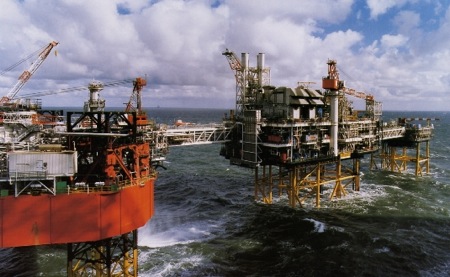
The Obama administration threw heaters this week to influence climate and energy policy and practices. The first announcement — to end a long-standing moratorium on offshore oil drilling — was seen as a wild pitch.
The president said the Interior Department would open large swaths of the Atlantic, Gulf, and Alaskan coasts to oil and natural gas development. The drilling zone on the East Coast extends from Delaware to the central coast of Florida. The Arctic Ocean north of Alaska will also be opened. Many Republicans and environmentalists expressed their dismay.
Then, the EPA and the Department of Transportation teamed up to set new tailpipe emissions and fuel mileage standards to limit greenhouse gases and increase fuel economy for new vehicles. The limits on greenhouse gases, the first ever set by the government, Â are expected to reduce emissions of carbon dioxide and other heat-trapping gases by about 30 percent between 2012 and 2016, and increase fuel efficiency to an average of 35.5 miles per gallon.
After Drilling and Driving Comes Mining
After that, the EPA proposed new water-quality standards for surface coal mining in Appalachia that Administrator Lisa Jackson said were intended to block the extravagantly wasteful mountaintop removal. The water regulations, which attempt to set the first numeric standards for salt in streams near surface coal mines, are meant to protect 95 percent of the region’s aquatic life and freshwater streams.
The proposed regulations were another clear action by the White House to limit the environmental consequences of a fossil fuel mining trend that has even outraged growing numbers of retired Appalachian coal miners. “We expect this guideline to change behaviors, to change actions,” said Jackson. “Because if we keep doing what we have been doing, we’ll continue to see degradation of water quality.”
Green activists applauded the mining and tailpipe actions. But the White House proposal for offshore drilling prompted consistent rebuke from climate activists and Republican lawmakers, and a few questions. Jeremy Symons, the senior vice president of the National Wildlife Federation, correctly pointed out that “we cannot drill our way to energy independence. The bottom line is there simply is not enough oil available off of our coasts to satisfy America’s fossil fuel addiction.”
Other observers noted that the government has sought in recent years to lease offshore regions for oil and gas development in other areas and attracted scant interest from the oil industry. Why? One reason is that drilling in deep water is exorbitantly expensive. An offshore rig can cost $200 million to $1 billion, and sinking a single well can cost $100 million or more.
An Offshore Diversion?
President Obama anticipated the puzzlement, asserting the offshore plan was a bid for energy pragmatism. “We are going to need to harness traditional sources of fuel even as we ramp up production of new sources of renewable, homegrown energy,” he said on Wednesday. Left out of the conversation, though, was a huge source of available petroleum that neither the White House, the Republicans, nor the oil industry wants to talk about.
That’s the Athabasca oil sands of northern Alberta, Canada. Petroleum engineers say there is enough oil embedded in the sands to fuel America for 300 years, based on current rates of consumption. The Obama administration has cleared the way for a new pipeline from Alberta to the Midwest. Hyperion Resources wants to build a $10 billion refinery amid the sunflower and wheat fields of South Dakota. The dust up over drilling on the Continental Shelf may well be a distraction, diverting attention from a much more substantive source of energy, oil industry wealth, and climate changing emissions.
— Keith Schneider